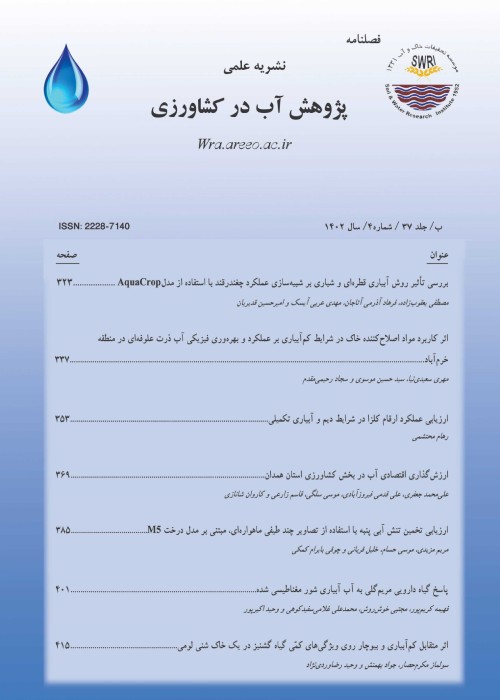Salinity Tolerance Evaluation in Two Selected Pomegranate (Punica granatum) Genotypes Compared with Rabab Neyriz Cultivar
To evaluate the effect of salinity stress on some of the growth characteristics of selected pomegranate (Punica granatum) genotypes of regions with soil and water salinity, a factorial experiment was carried out based on completely randomized design (CRD). Treatments included two factors: genotypes including 3 cultivars (‘Post Siyah Ardakan’,‘Rabab Neyriz’ and ‘Chah Afzal’) and irrigation water salinity at 5 levels (1, 3, 5, 7 and 9 dS/m), with 4 replications. The study was conducted at the National Salinity Research Center of Iran in 2018-2019. The results showed that type of genotype and levels of salinity affected morphological and physiological characteristics and concentration of nutrient elements in leaves. In all of the studied genotypes, with increase in salinity concentration, all of studied characteristics including branch height, branch diameter, number of leaves, green leaves percentage, aerial organs fresh and dry weight, relative water content percentage, SPAD, and contents of a, b and total chlorophylls decreased. However, necrotic leaves percentage, dropped leaves percentage, root fresh weight to aerial organs fresh weight ratio, relative ions leakage percentage, Na+ and Cl- percentage and Na+ to K+ ratio increased at higher salinity levels. At salinity level of 7 dS/m, ‘Chah-Afzal’ and ‘Rabab Neyriz’ showed an increase in necrotic leaves (3% and 5.60%, respectively ), dropped leaves (1.05% and 4.83%), relative ions leakage (3.95 % and 8.60%), Na+ (0.31% and 0.67%), Cl- (0.13% and 0.43%), K+ (0.64% and 0.27%) and Na+ to K+ ratio (0.12 and 0.64), compared to 1 dS/m (control) treatment. Also, in ‘Chah-Afzal’ and ‘Rabab Neyriz’, there was a decrease in green leaves (4.06% and 10.43%, respectively), number of total leaves (2.62% and 12.14%), relative water content (5.68% and 9.77%), and total chlorophylls (5.13% and 14.56%), compared to the control. Overall, ‘Chah-Afzal’ and ‘Rabab Neyriz’ were recognized as, respectively, the most tolerant and sensitive genotypes to salinity stress. ‘Chah-Afzal’ genotype tolerated salinity of 7 dS/m by maintaining its growth characteristics and increasing potassium uptake against sodium.
- حق عضویت دریافتی صرف حمایت از نشریات عضو و نگهداری، تکمیل و توسعه مگیران میشود.
- پرداخت حق اشتراک و دانلود مقالات اجازه بازنشر آن در سایر رسانههای چاپی و دیجیتال را به کاربر نمیدهد.



